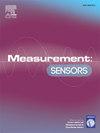Pneumonia detection from X-ray images using federated learning–An unsupervised learning approach
Q4 Engineering
引用次数: 0
Abstract
The emergence of advanced data analysis techniques has revolutionized patient healthcare by enabling the early and efficient detection of diseases. Traditionally, disease identification relied solely on the expertise of medical professionals. However, limitations in physician availability, particularly in resource-constrained regions, can hinder timely diagnosis. Fortunately, data analysis techniques are now widely employed to address a multitude of medical disease detection. This paper presents a novel Pneumonia disease detection model by analyzing the chest X-ray data. The development of robust diagnostic tools faces a critical challenge: the lack of access to large, labeled training datasets. This challenge arises because of privacy concerns about medical data. This research proposes a solution that tackles both data scarcity and privacy concerns. It leverages an unsupervised learning model trained on decentralized datasets. The unsupervised learning approach used is an Autoencoder neural network, and the decentralized learning technique used for model training is Federated Learning. The proposed approach trains the model on data residing at multiple locations, such as healthcare institutions, without compromising patient privacy. The datasets used to train the proposed model consist of chest X-ray images of pneumonia patients and healthy individuals. It offers satisfactory performance when compared to other existing Pneumonia detection models. In similar studies, medical institutions can collaborate and develop efficient medical tools without breaching patients’ data privacy.
求助全文
约1分钟内获得全文
求助全文
来源期刊

Measurement Sensors
Engineering-Industrial and Manufacturing Engineering
CiteScore
3.10
自引率
0.00%
发文量
184
审稿时长
56 days
 求助内容:
求助内容: 应助结果提醒方式:
应助结果提醒方式:


